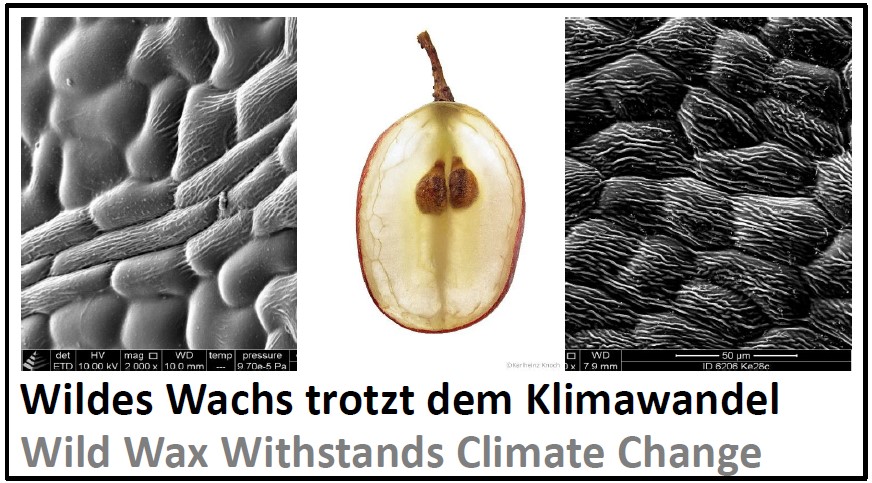2023 07: La cera salvaje desafía el cambio climático
 |
Climate change has already arrived also in our region. How can we adapt our agriculture against this? Even viticulture suffers from the heat, although grapevine with its deep roots should be better prepared than other crops. The progressively massive summer heat shifts the plant into a conundrum - to protect photosynthesis against high temperature, it needs to stimulate transpiration through the stomata, to safeguard the water extracted from the soil, it must close them. How do desert plants escape this problem? They cover their leaves in wax, such that solar radiation is reflected and cannot even penetrate into the leaf. However, our domesticated grapevine harbours only a thin wax layer. However, we discovered that the European Wild Grapevine, its ancestor, can accumulate much thicker wax layers. Can we used this for breeding? The answer is yes - we could show that this ability is engrained into the genes of wild grapevines. As unexpected side effect the spores of Powdery Mildew, a fungal disease that spreads progressively due to warmer climate, cannot attach on the wax-rich surface of wild grapes. They need significantly longer to form appressoria, by which they attach. This provides a time advantage to the plant to get her defence into place. Publication 201. Ge XS, Hetzer B, Tisch C, Kortekamp A, Nick P (2023) Surface wax in the ancestral grapevine Vitis sylvestris correlate with partial resistance to Powdery Mildew. BMC Plant Biology 23, 304 - pdf
|
